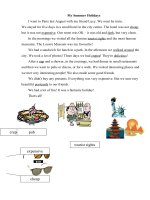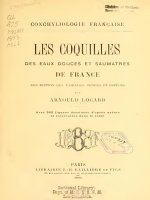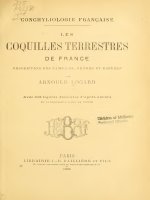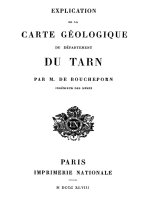France, 1750-1889
Bạn đang xem bản rút gọn của tài liệu. Xem và tải ngay bản đầy đủ của tài liệu tại đây (118.14 KB, 23 trang )
7 France, –
Jack Censer
By , educated Frenchmen and women had gained wide experience
of reading periodicals, even though a half-century earlier, periodicals
featured little
even in the lives of the elite.
Although many other kinds of
periodicals served the general public – primarily advertisers and literary
journals – newspapers attracted the most interest. French eighteenth-
century readers, who understood the politics of culture extremely well
and tended to see cultural politics as that arena left open when politics
was censored or obscured, saw newspapers, with their political emphasis,
as the most significant of all serial publications. Perhaps future analysts
might find gender or class or regional differences played a part in the
public’s assessment, but it does appear that, for the educated, politics,
narrowly conceived, trumped cultural and other disputes. For these rea-
sons, and because the chapter by Simon Burrows on ‘The Cosmopolitan
Press’ above has already given considerable information on the busi-
ness, structure and control of the French press, this chapter concentrates
on the political messages circulating in the press inside ancien regime
France.
The French political press originated in when Th´eophraste
Renaudot, under the aegis of Cardinal Richelieu, founded the Gazette
de France. Closely tied to the government, this newspaper depended on
and reflected royal policy. While handbills, fliers and manuscript mate-
rials abounded, the government squashed any effort to begin alternative
serial publications because it had guaranteed a monopoly to Renaudot.
Nonetheless, within fifteen years, new Francophone organs established
themselves across the border to address the French market and other
readers throughout Europe. By the mid-eighteenth century, this politi-
cal press consisted of the Gazette de France and several extra-territorial
gazettes, though only a few were allowed to enter France. An alteration
of policy in the late s opened the borders to about a dozen more
periodicals.
The six most important were based in four Dutch cities (The
Hague, Amsterdam, Leiden and Utrecht), Avignon and Germany (the
Courier du Bas-Rhin, founded in ).
Along with the Gazette de France,
Jack Censer
these papers shared a sombre style and comprehensive coverage, though
they differed over the treatment of non-political fare. Whatever their simi-
larities in appearance, all extra-territorial papers enjoyed an independence
from France totally unavailable to the Gazette.
Throughout the period to early , the Gazette de France and
its relatives provided the lion’s share of political information to contem-
porary readers. Nevertheless, several journalists experimented with alter-
native approaches, including a handful of adventurers who produced the
published equivalent of the gossipy nouvelles `a la main.
But after ,
some really important innovations appeared. In , the government
accepted a proposal by the press tsar Charles-Joseph Panckoucke to pub-
lish a paper under its guidance – the Journal de Gen`eve – that would claim
a foreign provenance but actually be based in France. Two years later,
he added a literary section, which also
appeared in another of his papers,
the Journal de Bruxelles.By the political sections of both papers
had
also become identical. In the same year, Panckoucke
’s
widely read
Mercure de France added the political portion of the Brussels sheet to its
pages.
These two French organs differed from other newspapers because
they were clearly – at least to twentieth-century observers – published in
France, yet claimed a foreign origin. Although their copy resembled that
of the foreign papers, the government had more direct levers of control.
In contrast to older papers they also adopted a magazine-like appearance,
with fewer and longer articles than their predecessors. In the mid-s,
yet another type of news organ emerged, when the Foreign Minister, the
Count de Vergennes, to further his policy of supporting the American
revolutionaries against the British, established then subsidised the Affaires
de l’Angleterre et de l’Amerique. From its inception in , the Affaires
de l’Angleterre et de l’Amerique was distinguished by a far more analytic
style than that of any other political paper.
This strategy had been tried
earlier, in the mid-s, but without major effect.
The London-based
Courier de l’Europe, which had begun in like other foreign gazettes,
also became a heavily controlled organ to support French foreign policy.
Although these papers enjoyed a mixture of independence and depen-
dence which was seemingly little different to Panckoucke’s journals, the
government was playing a risky game in hoping this controlled medium
would damage the more independent competitors.
The assortment of political periodicals emerging in the s also
included the Annales politiques, civiles et litt´eraires du dix-huiti`eme si`ecle,
begun in by Simon-Nicolas-Henri Linguet. Linguet’s journal resem-
bled the foreign gazettes in that it was a privately run journal published
abroad, but the comparison ends there. Like the Affaires de l’Angleterre
et de l’Amerique, the Annales was a journal with a focus, in this case
France –
the opinions of Linguet. And his views were possibly the most extreme
published prior to the Revolution.
Newspapers experienced repression across a wide spectrum as the
government sought to insulate the monarchy from criticism. The case
studies that follow show both how policy and effectiveness varied and
fluctuated with circumstance, and how individual journals could experi-
ence specific ministerial interventions. Despite this shifting governmental
framework, the number of papers increased over time, from five in the
s to a dozen in the late s and nineteen by the end of the ancien
regime – and these totals only include papers that lasted at least three
years and circulated legally
. The papers
’ readership also apparently
increased, from a combined weekly circulation of , during the War
of Austrian Succession to , during the American Revolution, and
this figure does not include Linguet’s wildly popular Annales, which
appeared spasmodically. In peace these numbers sagged considerably,
probably at least by one-half, if the experience of the Courrier d’Avignon
after the Seven Years War is typical. In France, the readers seemingly
came from the educated elite and almost half of them were nobles. Given
the small proportion of nobles in the overall population, they constituted
a huge proportion of the newspapers’ clients.
Within the constraints imposed by the government, this panoply of
print organs competed for the attention of the French public. The rest of
this chapter assesses how problematic this was for the Bourbon govern-
ment, focusing narrowly, and thus sharply, on politics. This allows us to
address the audience’s understanding of the French government, surely
the most significant question for French people. But concentrating on
France does not mean we should ignore foreign news, both because
foreign developments had implications for France and because readers,
recognising that the government influenced the press, hoped to learn
about their own land through a variety of portals.
The conservative end of the ancien regime political spectrum was gene-
rally marked by royal self-justifications about the monarch’s divine right
to rule. The polar opposite is more difficult to fix, as it lay in con-
tested ground, for, while never envisioning a revolution, many contem-
poraries scorned, and some even vilified, both Louis XV and Louis XVI.
Although some scholars have placed the press close to the conserva-
tive pole,
a few historians claim to have identified an evolution toward
radicalism.
The most conservative political journal under the ancien
regime was the monarch’s own Gazette de France.
Although this perio-
dical shared much stylistically with the other gazettes, its unique role as
the representative of the royal viewpoint gave it a certain distinctiveness.
The paper presented events in an opaque manner, but made its overall
Jack Censer
viewpoint apparent through endless repetition, as well as occasional
exemplary coverage and injections of opinion. In the absence of editorial
comment, its position was not forcefully presented but reasonably clear.
To understand the results of this approach, it is necessary to examine
first domestic, then foreign, affairs. When directly covering France, the
Gazette’s editors tried to bolster the image of the monarchy and monarch,
by emphasising the king in his ceremonial and familial role. The other
institutions of state and prominent individuals appeared only as they cir-
culated through the royal domain. The mysteries of state – a term referring
to monarchical habits whose actual practice was reserved to the king and
shrouded from the public – remained absolutely safe in the hands of the
Gazette.
In its coverage of France’s foreign policy, however, this government
organ produced a more mixed picture. As a paper of
record, the
Gazette
de France’s reports generally accorded with how an unfettered educated
elite would
have interpreted events. As such, the domestic and militar
y
failures of France’s allies and successes of her enemies would eventually
surface. The same was true of
France
’s own military ventures. In this
way,
royal policies came under scrutiny. But one should not overemphasise this
openness, because the government occasionally imposed a cer
tain pro-
pagandistic angle, or more often simply omitted problems, though they
frequently resurfaced later in a rather distorted manner. Moreover, many
events reinforced French policy and the Gazette swiftly reported them.
However, over the course of the century, in presenting the domestic politi-
cal structures of other countries, the Gazette de France developed a more
challenging coverage of France. To explore this evolution requires exami-
ning the Gazette’s reporting. In the s and early s the Gazette’s
reporting of the affairs of other countries emphasised the role of the
primary political authority. When the countries covered were monar-
chies, personal rule and the ruler’s intervention into daily affairs received
attention, as it did in coverage of France. But by the end of the ancien
regime, the paper reported, at least obliquely, much more conflict and
stressed the actions of competing elites rather than that of the rulers them-
selves. Perhaps this point is best demonstrated by contrasting two issues
of the Gazette: one from , the other from .
In , the Gazette de France published a twelve-page weekly edition.
The number of July was no different from usual. Of the sixty-
three news bulletins on foreign matters in this issue, one covered armed
conflict, and the remainder related the internal political situations of many
European countries – including Scandinavian, German and Italian states,
Great Britain and Spain. Regardless of the country described, the only
significant place for political contestation implicitly lay within the ruling
France –
elite, since the Gazette reported not only on sovereigns, but on ministers,
diets, parliaments and significant personages at court. This coverage paid
no attention to problems between these elites and their rulers but tacitly
recognised divided authority. Whatever potential tensions the Gazette’s
pattern of reporting implied tended to be nullified by the enthusiasm
the paper manifested toward each country’s leader. Twenty-seven of the
sixty-three articles exclusively described the sovereign and consort, and
the attitudes expressed supplemented this volume of attention. While the
Gazette routinely noted the intermediate bodies and courtiers, it only
concentrated on the rulers of state. Thus the lead article in the issue
of July praised the resolution and diligence shown by the Swedish
king in rebuilding fire-ravaged Stockholm. Even more significant, these
encomiums merely reinforced the yet stronger plaudits of the preceding
week’s description of the actual fire. The Gazette noted that ‘the wind
was blowing directly on the port, the storehouses and artillery depot; it
is only by the presence of the Monarch and by the admirable disposi-
tions that His Majesty ordered, that these depots, so precious to the
defence of the state, have been saved’. Other monarchs were similarly
praised in the same issue for apparently crucial interventions of their
own.
By the s, the Gazette de France published four pages twice weekly in
far smaller print. The issue dated November resembles any other,
and includes material from Warsaw, Madrid, Vienna, Naples, London,
The Hague and Versailles. But if physical changes in the paper over the
preceding thirty years had been slight, there had been significant, if subtle,
alterations in content. There had been little shift in its coverage of conflict
between the ruling elite and the population at large: democratic revolu-
tions abroad and local, more ‘social’ insurgencies scarcely received notice.
Yet, the coverage of politically constituted entities did undergo a signifi-
cant change. Only four articles directly concerned the monarch. Now,
the Gazette’s portrayal of the elite showed a variety of elements without
any one pre-eminent. For the most part, articles simply recounted how
various officials and courtiers performed their political and social duties.
But this disintegration of monarchical leadership could also suggest limits
to sovereign authority. The manifesto promulgated by the Polish Grand
Chancellor before a meeting of the Diet and published as the lead story
on November provides an excellent example. Instead of leading, the
Chancellor was pleading. Rather than commanding, the official ‘strongly
recommended’, ‘reiterated’, and ‘wished’. Of course, Polish officials had
always approached the Diet that way, but this case was hardly unique in
the Gazette at this time, and in general the paper now envisaged authority
as shared.
Jack Censer
A wide reading in the Gazette of the late s and early s and
the late s and early s, though inevitably impressionistic, further
validates this pattern. To be sure, coverage of military campaigns in both
periods, despite the appearance of officers and generals, usually seems
implicitly to focus on kings. Military affairs were, after all, emanations of
royal power. But in other spheres of political activity, one sees the pre-
dicted paradigm. During the earlier period, even the reports of internal
crises centred on the King’s government. For example, one report from
London in stated: ‘As contraband is always proceeding despite the
measures taken by the government, and since the Isle of Man, by its
location, contributes much to illicit commerce, the government would
like to unite this island with Great Britain.’
Similarly, reports of uprisings
or disturbances, especially in European colonies, typically
concluded by
announcing the resumption of order.
The implicit assumption behind
the phrasing of these reports was that government had a single
leader.
And the Gazette always placed great emphasis on the sovereign’s leader-
ship: it even viewed George III, the constitutional monarch of Britain, as
an absolutist.
From the late s, important exceptions can be found to the common
reportorial tendencies of the Gazette. Under the influence of Vergennes,
some positive reporting of the Americans and their Revolution filtered
into the paper, although it never printed the text of the Declaration
of Independence.
Moreover, sometimes the paper presented monar-
chic actions as responses to unavoidable moral dicta and hence treated
monarchs as something less than free agents, acting according to ethical
constraints.
While this did not overturn the Gazette’s view of ancien
regime governance as the rule of competing bodies, it did modify even
further the paper’s emphasis on personal rule.
This transformation in the Gazette’s portrayal of internal politics occur-
red seamlessly over time. Gradually the paper paid less attention to mona-
rchical authority and gave more space to competition, at least with other
constituted powers, and especially during the democratic revolutions
towards the end of the century. A new view, not of subordinate political
organs and individuals, but of the monarchy, primarily characterised the
change. Indeed, one simply finds fewer items about the sovereign. The
reasons for this glacial shift in the Gazette’s representation of monarchy
are unclear, but whatever the cause, such a general tendency posed diffi-
culties, at least in theory, for the French state. Envisioning foreign govern-
ments as functioning through competing bodies and divided authority
undermined the royal administration’s officially sanctioned absolutist
view of French governance. In fact, the practice of Bourbon government
was more flexible than the theory, and the public, which already believed
France –
in contestation with the crown, was only too willing to accept this new
vision. Readers could juxtapose articles about foreign governments
against those concerning France, permitting them to perceive the latter
stories as unrepresentative and less realistic. Of course, the resultant
contrast between French and foreign governments provided at most an
indirect critique, and in all probability the government permitted the
Gazette to take an implicitly positive view of alternative political structures
only because of the mildness of the threat. Probably, this new reporting
mainly reflected a shift in political structures (or understanding about
these structures) which the government simply ignored.
Yet if prob-
lematic news seeped out even in the government sponsored Gazette, the
extra-territorial gazettes posed far greater difficulties.
For a variety of reasons, but above all the rela
tive in
fluence of the
French state, the foreign gazettes published a wide range of opinion on
France. This diversity becomes apparent if we contrast the reporting of
two of them, one among the most, the other the least, adventurous in their
views of France. Least pointed was the Courrier d’Avignon, which was
published in a Papal enclave surrounded by France. It generally appeared
bi-weekly in a four-page edition with sporadic supplements until its
demise in and was priced at livres for an annual subscription.
The Courrier d’Avignon was founded in by Fran¸cois Mor´enas, a
local writer, and the Giroud family, established Avignon publishers, and
survived until .In, the Girouds gained complete control, but
by Mor´enas was once again serving as their editor. This arrange-
ment lasted until , when the French, in a dispute with the Pope over
Gallicanism, occupied Avignon. The Bourbon monarchy, which custo-
marily allowed only the Gazette de France to publish news within its bor-
ders, outlawed the Courrier d’Avignon. Mor´enas immediately requested
and received permission to continue the newspaper from Monaco, an-
other Papal territory. In late , when the French evacuated Avignon,
Mor´enas had just died. Even though anonymous editors successfully
maintained the Courrier de Monaco for six months
in
, Bourbon offi-
cials had always perceived Monaco as a temporary solution and insisted
that the Courrier de Monaco resume in Avignon. Joachim Le Blanc, an
important French official there, received the privilege to publish in
and when he died, in , his widow assumed control and operated it
until . The Le Blancs hired as their editors successively the abb´e
Roubaud (–), Jean-Baptiste Artaud (–) and finally Sabin
Tournal, who would achieve fame in the Revolution.
The Bourbon
invasion of Avignon and the forced relocation of its newspaper reveal
clearly the ultimate and exceptional power the French possessed over
both the city and the Courrier d’Avignon. To promote their own policies,
Jack Censer
the French authorities occasionally intervened in news reporting. On the
whole, they limited themselves to minor adjustments, but from time to
time they sought to influence news about individual countries more sys-
tematically. In addition to such sporadic coercive measures, the French
issued a stream of propaganda promoting their own view of politics.
In this restrictive environment, the Courrier d’Avignon’s coverage of
France w
as much less challenging than
that of the Dutch gazettes; yet it
nevertheless enjoyed some independence.
The portrayal of the domestic
politics of foreign countries went well beyond that in the Gazette and
yielded a stronger critique. Little changed in its portrayal of how tradi-
tional bodies functioned – whether sharing or monopolising authority –
across our period. But as democratic movements emerged, they were
treated dispassionately, often favourably, suggesting
a world with many
choices. Although the Courrier d’Avignon downplayed, or even omitted,
reference to rioters (as in the case of London’s Gordon Riots in ),
thus differentiating them from revolutionaries, its coverage admitted the
existence of both conflicting elites and political upheavals.
The implicit
contrast with static absolutism made this coverage more challenging than
that in the Gazette de France. All this provided the possibility of contempla-
ting absolutism critically; coverage of large-scale changes suggested major
alternatives.
The Courrier d’Avignon also embarked on a different tack from the
Gazette de France by sustained reporting of potential aspersions on
France’s friends or by ennobling her enemies. For example, the paper’s
treatment of British politics from mid- to late under a London
dateline was clearly contrary to French governmental interests. In this
period, the French were at war with their traditional rival; yet the Courrier
d’Avignon praised the British authorities and downplayed any opposi-
tion to them. The paper persisted in praising George III explicitly and
implicitly for his performance as chief executive, his paternal relationship
with parliament and the people, and his position in a brilliant court.
It admiringly chronicled the King’s activities as commander-in-chief of
the military forces, and one report noted that the royal example inspired
the war effort of the entire nation.
This and similar encomiums re-
flected the Courrier d’Avignon’s favourable view of the British military
engagement.
While this example shows how the Courrier d’Avignon could pursue
a line relatively independent of French interests, it would be unfair to
regard its treatment of foreign affairs as uniformly or generally inimical
to France. From the late s until the resumption of hostilities in the
mid-s, the Courrier d’Avignon rendered little judgement on France’s
foreign policy. But treatment of the Seven Years War (–), a very
France –
difficult conflict for the Bourbon government, proved far less favourable
to France. The support offered during the previous conflict was replaced
by a muddle of coverage that surely would have displeased authorities
in Versailles. Thereafter, from the mid-s until the mid-s, with
peace more or less the order of the day, the Courrier d’Avignon commented
little on French foreign policy, either explicitly or implicitly. Yet during
the American Revolution, an avalanche of praise for the Bourbons out-
weighed the substantial endorsement, noted above, of Hanoverian policy
in the London section of the paper. This commitment to French foreign
policy endured almost into the mid-s, when the treatment of pro-
blems elsewhere in Europe reduced its positive edge.
An over
view of the
Courrier
d
’Avignon’s treatment
of French policy dur-
ing the American Revolution casts light on its ambiguous approach to for-
eign reporting. Britain – as France’s main antagonist – was so important in
French foreign policy considerations that examining the former throws
much light on the latter. As earlier noted, from mid- to , the
British government was treated positively in reports from London.
Indeed, the paper singled out Lord Nor
th for favourable attention, and
one report was particularly sympathetic. After describing an attackby
Charles James Fox that condemned the entire North ministry, the perio-
dical summarised the conclusion of the debate:
This bloody diatribe was finished with nothing resolved. The minister constitu-
tionally obliged to listen to all sorts of indignities, Lord N—H responded sensi-
tively to the many reproaches. He is accused of having betrayed his country and
having accumulated emoluments and offices. He offers to resign what the king
has given him. Attacked for his love for his family, he sheds tears at the memory of
the death of a recently deceased son; numerous legislators, thinking that a good
father cannot be dishonest, defend him.
To a society brimming with a new sentimentality, such phrases translated
into a strong endorsement of North.
Juxtaposed against such positive assessments, which also predominate
in reports from Britain in the years preceding the Boston Tea Party, were
many contrary views. From to and again after assaults
on their government originated from various British provenances. While
the king fared reasonably well, ministers received strong criticism. In the
earlier period the Courrier d’Avignon adopted a strong anti-war stance,
a position directly contradicting the executive’s policy. Before the out-
breakof hostilities, the paper merely urged compromise with the
Americans,
but once the Revolution erupted, it highlighted British
atrocities. One article in effect labelled British actions a crime, describing
a soldier who preferred to resign his commission rather than ‘adopt the









